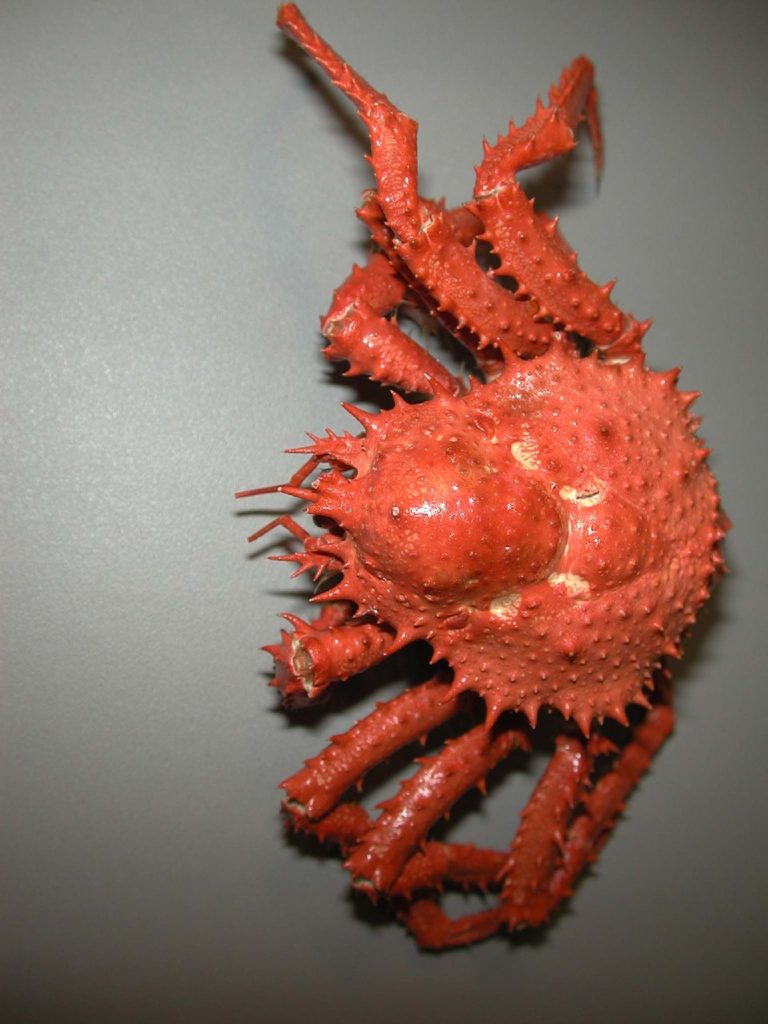A new study has cast doubt on the claim that crabs may have disappeared from Antarctica only to return due to warming seas.
The theory surfaced two years ago following the discovery of a major colony of King crabs (Lithodidae) in the Palmer Deep, a basin in the continental shelf off the Antarctic Peninsula. It was thought the species may have left the continent between 40 and 15 million years ago and was returning as seawater temperatures rose. Fears were expressed that its reintroduction would decimate other fauna in the region.
But an extensive study of all known crab records by a team of scientists at British Antarctic Survey (BAS) has led it to conclude the crabs may have been there all along rather than moving in from a different area.
Writing in the online journal PLOS ONE the team, led by marine biologist, Huw Griffiths, claims the “invasion” hypothesis is fundamentally flawed because it relied upon poor fossil records relating to a completely different group of crabs and that sampling of the extant species is far too limited to draw any firm conclusions.
The fossils of deep water crabs are hard to come by because they are susceptible to decay soon after they die. There is no Antarctic fossil record for King crabs with only two such records existing, neither of which originate from Antarctic waters (south of 60°S). Much of Antarctica is covered with ice restricting access to areas where fossils may be found. This means there is a great deal of uncertainty surrounding the history of crab populations in the continent.
The team assembled a database of more than sixteen thousand records of living and fossil crabs to assess the extent of their populations. Fossil data were compiled from all previously published sources as well as the extensive fossil collection at BAS’ offices in Cambridge. All published data for living specimens were examined as well as records from unpublished fisheries’ and scientific reports.
The first record of a crab in Antarctica is of one from the group Brachyura found on the shores of the South Orkney Islands in 1903. To date, 22 species of crab and lobster have been found in the Southern Ocean, 12 of which are King crabs found in Antarctic waters.

The first record of King crabs dates back to 1967 when an individual was recovered close to Scott Island north of the Ross Sea. The lack of data reflects the fact that very little deep water sampling has been done.
The distribution pattern, with two species being found only in Antarctica (including the one reported as invasive) and no records of them being found elsewhere, implies a long and enduring presence in the region. It would suggest they have had more than a few centuries to develop and evolve.
Lead author, Huw Griffiths, from BAS, said:
“These findings are important because, for the first time, we were able to piece together all available information to get a clearer understanding of the diversity and distribution of crabs in Antarctica. Many of these elusive deep-sea animals, previously thought to be invasive, have turned out to be uniquely Antarctic species.”
Recent studies suggested King crabs would pose a serious risk to native fauna. Invertebrates such as molluscs were thought to be most at risk. But the team says there is strong evidence these crabs are mostly foragers and scavengers attracted to carrion.
The team concludes by recommending that a programme of repeated sampling of King crab distributions in Antarctic waters is conducted.
ENDS
Issued by the British Antarctic Survey Press Office.
Press Office contact:
Paul Seagrove, Tel: +44 (0)1223 221414; +44 (0)7736 921693) email: psea@bas.ac.uk
Scientist contact:
Dr Huw Griffiths, British Antarctic Survey. Tel: +44 (0)1223 221417
Notes for editors
The paper: “Antarctic Crabs: Invasion or Endurance” is published in Plos One
Stills are available from the British Antarctic Survey Press Office.
